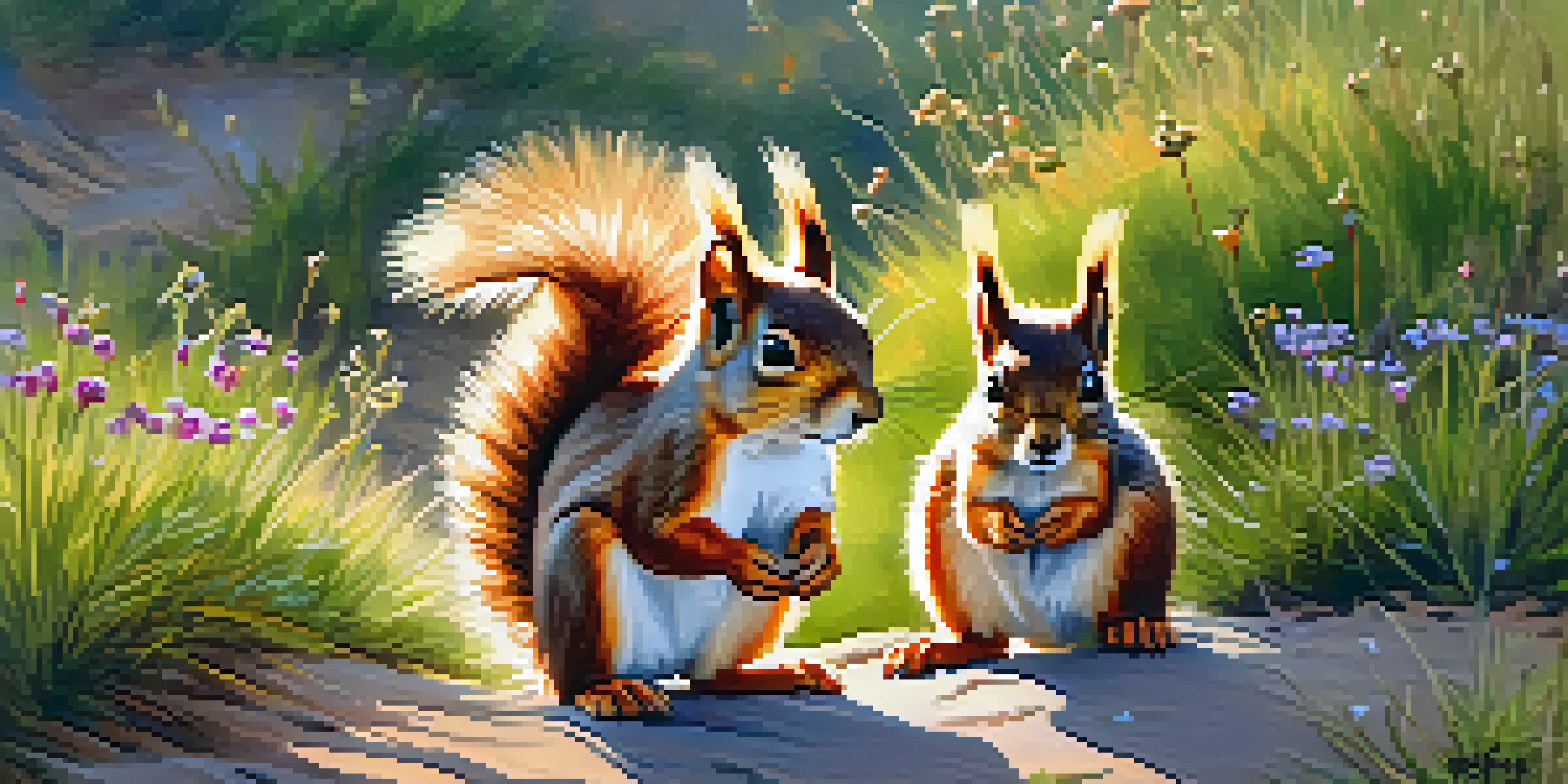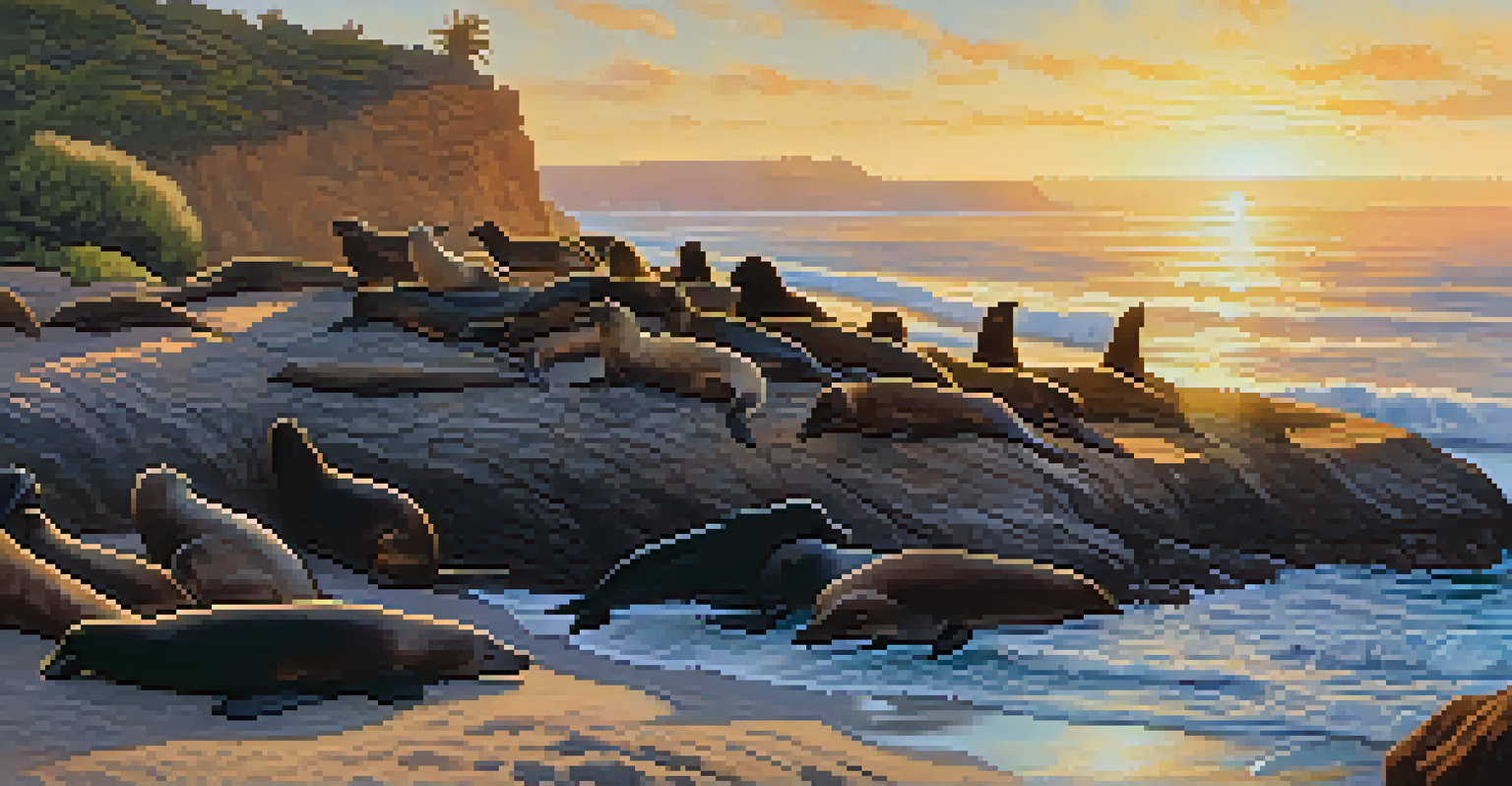Best Times for Wildlife Photography in San Diego Areas

Understanding Wildlife Behavior for Better Photos
To capture stunning wildlife photographs, it's essential to understand the behavior of animals. Many species are more active during specific times of day, often referred to as the 'golden hours'—the early morning and late afternoon. During these times, animals are typically foraging for food or engaging in social behaviors, making them more visible and dynamic subjects for your camera.
In every walk with nature one receives far more than he seeks.
Additionally, certain species have seasonal patterns that can affect their visibility. For example, migratory birds flock to San Diego during the spring and fall, providing excellent opportunities for birdwatching and photography. This understanding of animal behavior can greatly enhance your chances of capturing that perfect shot.
By planning your photography outings around these behavioral cues, you can optimize your chances of encountering wildlife in their most active states. It’s like knowing the best time to go fishing—you wouldn’t head out at midday when the fish are hiding, right?
Early Mornings: The Magic Hour for Photographers
Early mornings in San Diego offer a unique opportunity for wildlife photographers. As the sun begins to rise, the soft golden light creates a magical atmosphere, perfect for capturing the subtle details of animals in their natural habitats. This time is particularly rewarding for photographing birds and mammals that are just starting their day.

In areas like Torrey Pines State Natural Reserve or Cabrillo National Monument, you’ll find a plethora of wildlife stirring at dawn. From playful squirrels to majestic hawks, the early hours are filled with activity. Plus, for those who enjoy solitude, the early morning hours often mean fewer crowds, allowing for a more peaceful shooting experience.
Timing is Key for Great Photos
Understanding animal behavior during golden hours—early mornings and late afternoons—can significantly enhance your wildlife photography.
So, set your alarm a little earlier next time you plan a shoot. The tranquility of the early morning, combined with the chance to catch wildlife at their most active, can lead to some breathtaking photographs.
Late Afternoons: Another Prime Time for Shots
Much like the early mornings, late afternoons also provide fantastic lighting and opportunities for wildlife photography. As the sun begins to set, the warm hues can enhance your photos, giving them a captivating glow. Many animals, especially mammals, become more active again as they prepare for evening activities, making this a great time to capture their behavior.
The earth has music for those who listen.
San Diego's coastal areas, such as La Jolla or Mission Bay, are particularly lively during these hours. You might spot sea lions basking on the rocks or dolphins playing offshore. The late afternoon can be a great time to get candid shots of wildlife interacting with their environment, creating stories through your lens.
Don't forget to bring your camera and be patient. The best moments often happen when you least expect them, and being in the right place at the right time can lead to some truly remarkable images.
Seasonal Changes Impact Wildlife Visibility
Understanding the seasons in San Diego can significantly influence your wildlife photography. Different animals are more visible during various times of the year. For instance, winter months may bring migratory birds, while spring can be a vibrant time for blooming flowers and the animals that feast on them, such as butterflies and bees.
During spring, many mammals are also busy with their young, making them more active and visible as they forage for food. This is a perfect time to capture those heartwarming moments of animal parenting. Conversely, summer may lead to quieter times as animals seek shade and shelter from the heat.
Seasons Affect Wildlife Visibility
Aligning your photography outings with seasonal changes can increase your chances of encountering diverse wildlife in San Diego.
By aligning your photography schedule with the changing seasons, you can maximize your chances of encountering diverse wildlife. Observing the natural rhythms of life in San Diego adds an exciting layer to your photography adventures.
Weather Considerations: Rain, Sun, and Fog
Weather plays a crucial role in wildlife photography, and San Diego's climate offers a variety of conditions to work with. Clear, sunny days are often ideal for capturing bright, vivid colors in your photos. However, don’t discount overcast days—soft, diffused light can help minimize harsh shadows and bring out the details in your wildlife subjects.
Foggy mornings in coastal areas can create an ethereal quality to your shots, adding depth and mystery to your images. Many photographers find that these conditions can yield unique and dramatic results, especially with coastal wildlife such as seals and seabirds.
So, keep an eye on the weather forecast and be prepared to adapt your plans. Sometimes the most unexpected weather can lead to the most stunning photographs.
Best Locations in San Diego for Wildlife Photography
San Diego is a treasure trove of wildlife photography locations. From the expansive deserts of Anza-Borrego to the coastal cliffs of La Jolla, each area offers unique opportunities to capture diverse species. The San Elijo Lagoon and the Tijuana River Estuary are also fantastic spots for birdwatching, especially during migration seasons.
Don't forget about the local parks, like Balboa Park, where you can find a variety of wildlife amidst beautiful gardens. These locations are often less crowded, giving you the chance to focus on your photography without distractions. Plus, they provide a convenient way to explore wildlife close to home.
Ethics Matter in Wildlife Photography
Practicing ethical photography by respecting wildlife habitats ensures we capture beautiful moments without disturbing nature.
By exploring different locations throughout San Diego, you’ll discover the rich variety of wildlife that calls this area home. Each outing can reveal new subjects and settings, keeping your photography fresh and exciting.
Ethics of Wildlife Photography: Respecting Nature
As wildlife photographers, we have a responsibility to respect the animals and their habitats. This means keeping a safe distance and avoiding any actions that could disturb their natural behaviors. Always remember that our goal is to capture moments without interfering with the life of the subject.
Using long lenses can help you maintain that distance while still getting those close-up shots. Additionally, be mindful of the environment—stick to paths and avoid trampling vegetation, especially in sensitive areas where wildlife may be nesting.

By practicing ethical photography, we contribute to the preservation of wildlife and their habitats. This respect not only enhances our photography experience but also ensures that future generations can enjoy the beauty of nature.